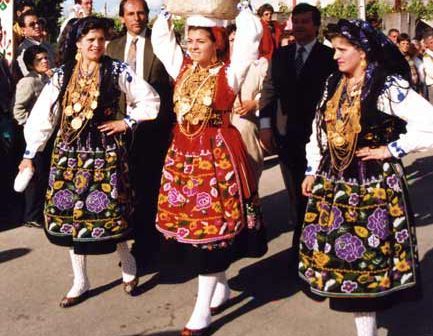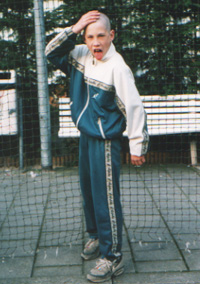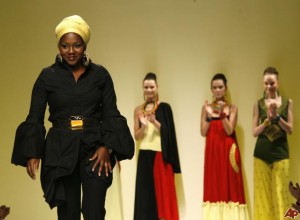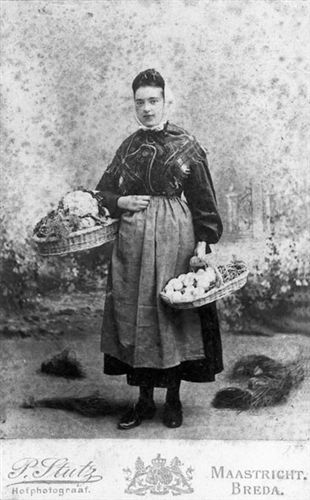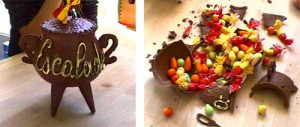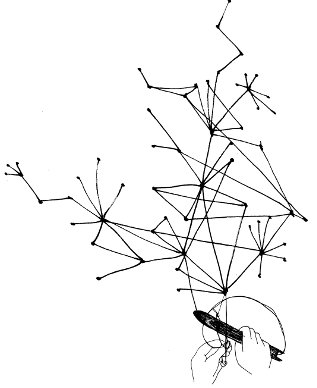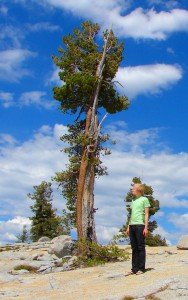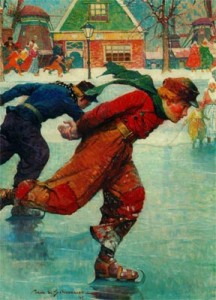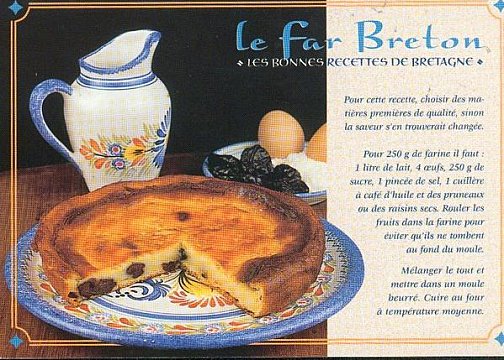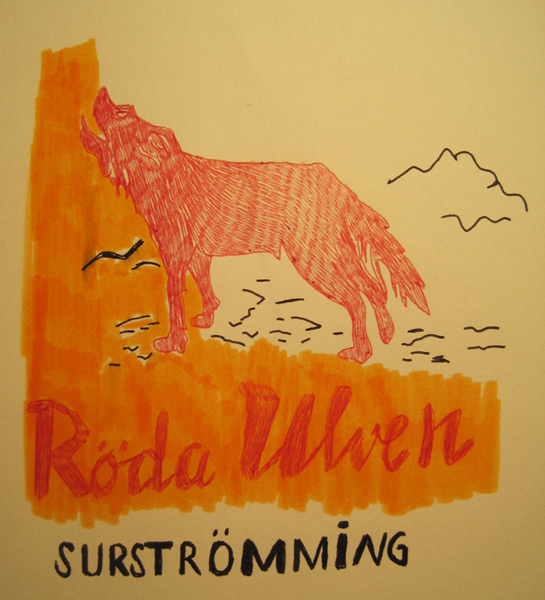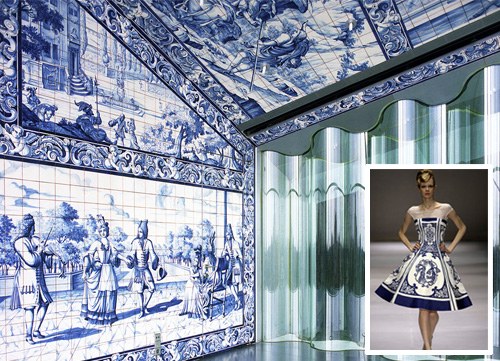Folklore is a way of saying that you’re the same. That you’re equal. People do the same things and were the same cloths as soon as they ‘belong’ to one an other. They ‘belong’ to a group and for that group there is a symbol, and that symbol is they’re clothing. Just like in the old days these symbols still exist and everyone has they’re own. The only big difference is that the groups have become smaller and the individual more important. But the essential rule of this behavior remains the same; love and affection for one another. It’s a way of saying this to you’re friends and family and group members without having to say it. You just do, wair, eat, see, feel, touch, smell and maybe even think the same things, and while doing this you subliminally say that you’re a friend of your neighbor.
"Projects" Category
“La vai Lisboa”
Wednesday, September 16, 2009
Folklore in Portugal is an Artistic Manifestation that really influenced portugese society.
Since genarations ago until the present days people still doing the Folklore Parade, during these celebration everybody in the country goes to the street to become part of this show. Here everybody can see the costumes, the sybolic objects, the music, food, drinks, villages party’s.
I found a connection between the folklore from Portugal and from The Netherlands because they both developed embroidering techniques in women dresses. These dresses are worked by hand so everything is embroidered carefully in a really illustrative way. We can notice that similarity in both cultures, through the shapes, drawings, the geometric forms, waves, spots, flowers, leaves and hearts. All the colours are always really strong, red, blue, beige, yellows, black and green and the background colour white or black, depending of the social women’s situation.
Most of these women use the folklore to express themselves with their own dress, for each costume they have a different meaning and a really particular taste. Most of the time these costumes are based on social habits, the agriculture, family, society and politics, which caused these embroided dresses to become a piece of history.
Het Mooswief
Tuesday, September 15, 2009
Folklore, traditionele gebruiken, leven ze nog?? Tradities veranderen vaak in herinneringen, die dan weer als inspiratiebron kunnen dienen voor kunstenaars, zoals we konden zien in het Zuiderzee museum. Jonge kunstenaars blazen de traditionele klederdracht een nieuw leven in. Zo laten we ons verbazen door voorwerpen die vroeger tot de orde van de dag behoorden. Mijn folklore ligt in het zuiden, in een kleine stad genaamd Maastricht. Het Mooswief, wat vrouwtje van de markt betekend, is zo’n herinnering die weer tot leven kwam. Ze stond altijd symbool voor de plattelands vrouwen die naar de stad trokken om hun producten op de markt de verkopen, maar sins enkele jaren is er een enorme papiermarche pop van haar gemaakt waarmee jaarlijks de ‘Vasteloavend’ wordt ingeluid. Tijdens carnaval hangt ze dan boven het vrijthof waar ze neerkijkt op alle mensen die carnaval komen vieren.
Behoort folklore tot de geschiedenis of is iets enkel folklore als het nog steeds leeft? Carnaval leeft, dat is zeker. Het hele zuiden kijkt er maandenlang naar uit. Verenigingen worden bij elkaar getrommeld, moeders worden ingezet om kostuums te naaien en enorme hoeveelheden bier worden door café eigenaren binnengesleept. Voor enkele dagen wordt de hele binnenstad omgetoverd tot een andere wereld, een wereld vol felle kleuren en fantasiefiguren. Het verbaasd mij elk jaar weer wat het effect van carnaval is op mensen. Alles mag en kan op eens, zo wordt er in elk geval gedacht. Drie dagen lijkt de wereld op z’n kop te staan, maar daarna is alles weer zoals het was. Het papier op straat en de bergen met glasscherven zijn het enige bewijs voor de losbandigheid die een paar uur geleden nog normaal leek te zijn. Een ochtend later gaat iedereen gewoon weer naar z’n werk, de duivel van gisteravond moet weer terug naar zijn advocatenkantoor en Zorro moet weer broodjes bakken in de bakkerij.
Tree of Life
Monday, September 14, 2009
A braid (also called plait) is a complex structure or pattern formed by intertwining three or more strands of flexible material such as textile fibers, wire, or human hair. Compared to the process of weaving a wide sheet of cloth from two separate, perpendicular groups of strands (warp and weft), a braid is usually long and narrow, with each component strand functionally equivalent in zigzagging forward through the overlapping mass of the others.
Hairflowers and memory boards were manufactured in denmark, by a special branch of braidingteknik (which otherwise was used for wigmaking). There were manufactured various types of “tree’s of life” or bouquets, to which different family members had provided hair. Often family members’ names were stamped on the background of just the flower or branch, which was produced by just their hair, soo the work simultaneously came to form a kind family tree.
greedy honouring
Monday, September 14, 2009
The mountain of porcelain in the first hall of the museum can connect on many point to an event in Geneva : ” L’escalade ” (the climbing)
This invading of broken objects refers to the invasion from the Savoy.
During the longest and darkest night of the year, soldiers invaded the city.
But Geneva defended itself and ” La mère royaume ” (the kingdom mother), was making a big hot soup, and topple it on the enemies. First the cauldron was an everyday object and now it is the symbol of popular resistance and independence in our collective memory.
Each year, chocolate maker and supermarket make thousands chocolate cauldrons with sugar vegetables in it.
The tradition wants the oldest and the youngest to break the cauldron and say « this is how died enemies of the republic ». Then you eat all broken pieces of chocolate.
The other point of the porcelain mountain was the aspect of mass consumption, wich can be connected to the moutain of chocolate cauldron in the shops a few weeks before the events. And the part that you create something, eat it, and re start one year after, and again and again.
FROM NETMENDING TO NETWORKING
Sunday, September 13, 2009
Netmenders are immediately connected to the concept of folklore. Now we do it industrially, there is no need of preserving this kind of techniques in order to have sea-nets. Nowadays it’s more convenient to buy a new one than repair a broken one.
For this reason it's said that technologies are destroying folklore. It's like saying that we shouldn't live the present because it leads too far from the past.
Folklore is (in one of the numerous definitions) a word to define that part of the culture that deals with popular more or less spontaneous habits and beliefs. The word was introduced when there was still a strong relationship with folks, villages etc. Now that society has changed we find it difficult to apply the term folklore to contemporary matter. The Zuiderzee exhibition confirmed this idea. The contemporary-times involvement wasn't about contemporary folklore, but about reinterpretation, modern design inspired by old dutch folklore. While taste, style and aesthetic values are continuously evolving human behaviors don't change that much in time, they just adapt. I think we can find these recursive characteristics on the internet. And here comes my "involvement". I found out that just as I've never been into my country/city traditions, i also (do not) relate with current habits on the internet. I'm just geographically connected, trough my ip, to the rest of the network like a 18th century's person who was not participating to its village folk's habits and celebrations. On the other hand, all the people always up to date with memes and myths on the internet, using social-networks, blogs, forums and chats, corresponds to the folk of that time. Different context, different medium of transmission, different people, same dynamics. We will see
Graffiti
Saturday, September 12, 2009
The exhibition at the Zuiderzeemuseum made me think of the term Folklore and it’s definition. What is folklore exactly? Is it a period in time or a certain style? There was clothes, drawings and design objects at the exibition as well as graffiti from Shoe. Is that Folklore too? For me folklore is a period of time, with a certain way of style that we can look back upon. We don’t think of folklore if we look at ourselves today! We are not in a kind of folklore YET, we will be in the future, for sure. But not today. And graffiti will be a part of our folklore too, because it is a big part of our culture, but that time hasn’t come yet. Maybe in a 100 years people will look back at us and talk about the funny way of our communication; ‘HAHA they used walls and paint to express their feelings.” But not today, we don’t see graffiti that way, for us it is normal, it is just something that is there. As it was for the people wearing ‘kraplaps’ and the traditional clothing. They didn’t look at themselves, surprised, they way we do now. Graffiti is our culture, not our folklore. Yet.
Birch Hands
Saturday, September 12, 2009
The concentration is at its highest point but the mind is totally free.
The figure is still and only the old hands are moving in a certain rhythm.
They work very precisely, repeating the cercal of movements, every one of which is polished to the perfection. These hands have been doing that for years. They know every movement and every detail of the material in them, which becomes very obedient in these hands.
In the room there stand a bit sweet thin scent, the scent of a birch bark. This scent and the feeling of a wooden strip between the fingers give this incredible warmth and create the illusion of a forest around.
At a certain point, the process becomes a meditation, and there is no more distinction between the material and the hands. They become a single indivisible whole. And at this very moment the nature triumphs, because at this very moment two of her creatures are brought together in the beautiful eternal harmony.
Waiting on Shore
Saturday, September 12, 2009
Wachten aan Wal
Tekst – lied
Het schommelt in mij hoofd
Schommelt al dagen, heen, weer
je bent weg, misschien vertrokken
Uitkijkend op de rivier, zie ik waar jij hoort te zijn
Ergens ver weg, aan de overkant
En op de rivier, langs het stromende water
Op weg naar waar het hoort, vaart een bootje
Het dobbert zachtjes heen en weer
Misschien ben jij het wel
De deining en de wind steekt op,
Slinger ik naar gedachten, verlangens,
Van wat wij zouden kunnen zijn,
Wachtend aan wal,
Wachten aan wal
We zouden kunnen zingen van geluk
We zouden kunnen zingen van geluk
We zouden kunnen dansen
Aan de overkant
Aan de overkant zijn bergen, en ook dalen
We zouden de weg kunnen vinden, met of zonder te verdwalen
Mijn oren suizen
De waaiende wind, mijn blonde haren
En daar nog steeds dat bootje waar wij op zouden kunnen varen
Rechtdoor, naar de overkant
We zouden kunnen
Wachtend aan wal
Wachten aan wal
Wachten aan wal
Zingen van geluk
We zouden kunnen dansen van geluk
We zouden kunnen samen,
Aan de overkant
Drops Are Water Too
Saturday, September 12, 2009
I haven’t been able to make a connection between their world and mine. Their world seems to be so far away from mine.
They all look the same; they eat the same, read the same, do the same. Are they even different people? The only way to preserve your world is to close it off from everything outside. Then you can continue in your eternal circle.
I know one thing: you can’t end something entirely. Influences will be there anyway; perhaps drop by drop, but drops are water too. Like water coming through a small hole in the dyke, drop by drop it fills the land with water and finally floods it untill there’s nothing left.
It’s a good thing that Hans Brinker put his finger in the dyke.
franconian silence
Friday, September 11, 2009
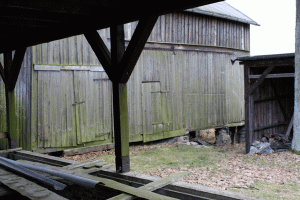
Moving again
and as usual somebody elses home – not mine. Strange place again.
They will not tell me about their tales, nor teach me their songs, nor share their wishes. Keeping mum like the puppets in a museum.
It is just what I see.
Their slow thoughts gahtering together behind the fences, which seperate their belongings. There into the woods. Closed faces, stubborn and the city people are not worth it anyway. And steps you hardly hear, sound is disappaering in thick layers of fallen spruce needles. Who shot the dog, the roaming, the strange one? It starts getting cold. But one stays. One does this and this and this – but never this. This girl, on the photo – you don´t know her anyway. This is mine – this is yours. Don’t dare a step.
I ask who is closing all the window shutters a long time before dawn? Who draws the lines? Who is hiding all the storys? Who is stealing the whispers about the people who did never return? And I ask who is removing the walls of snow and who is bringing the brothers to remain violently silent while sharing their lifes? Why do they stay calm when they see what they should not?
I ask questions, but the answers I get back, I can not be satisfied with.
Soy sacrilege
Friday, September 11, 2009
Select some real kitsch. Make it as tacky as you can. Deeply inelegant. Add some showy details. Mix it with tasteless notes, stir in cheap bits, put a pinch of mass-produced gaudiness and some fake comedy together with a touch of absurdity. Leave it to stand for a while and here we go… you may enjoy a magnificent and never-ending touristic enjoyment.
Folklore, I love you. You almost made me hate my region. Perverted rituals and misused symbols… I haven’t digested the mixture and I couldn’t think of producing a nice folklore-adapted design yet. At least not for now.
Still, I shall not pretend it is not part of my life. And part of my meals, actually! “Crêpes”, “galettes”, “far”, “kouign aman”, “palets” and other “lekker” buttery delights from Bretagne (France) are certainly what makes me enjoy folklore, after all. But then, is it really folklore or is it more a matter of tradition?
Do the ancestral recipes need to be translated* for the outsiders to actually become “official folklore”?
Anyways, as long as it does taste good, one would say… As a matter of fact, I ran out of milk the other day and thus I had to use soy milk when I made the tradional “far breton”. I was surprised to see that it didn’t taste bad at all! Sacrilege? Adaptation? Call it how you wish, but please never tell my grand-mother about it…
‘Freakfolk’
Friday, September 11, 2009
It is clear that the Lithuanians, the last European pagans remember their vernacular roots a little better than Western Europeans (even the in Soviet times promoted “pseudo folklore” was not able to erase Lithuanians connection with their tradition).
As one of the most important components of folklore in Lithuania is music I found that the contemporary electronical music scene has a relation with the old folklore songs. A number of musicians experiment sounds of folklore music in their electronic tunes with the nostalgia for our utopian pagan past. Therefore a genre of folklore music- ‘freakfolk’ appeared. The best example is Alina Orlova the so called ‘freakfolk’ performer,who grew up in the eastern Lithuania where life of people there is not touched with technology so much, where people still have stronger impact of folklore left. As a result of this a lot of music festivals are surrounded by certain rituals. A spiritual atmosphere is uphold in which people try not to forget the continuity of the spoken heritage and try to relate or combine their modern lives with the old tradition.
My grandparents ate rotten fish every Sunday
Friday, September 11, 2009
I think about a lot of things, but one of the things I mainly think about is food.
I am one of those who loves to travel and explore new places. When I am traveling in another country I hunger to try some bizarre dish. I have come across crazy foods such as: frog, crocodile, different kinds of candied insects amongst other things. But the strangest and smelliest food I have ever eaten is probably a dish from my home country! I am talking about the Swedish Surströmming.
Originally it comes from the north part of Sweden but is sold throughout
the country. The translation of Surströmming is Sour herring. The special thing with this fish is that it is fermented in a can for at least 9-12 months before you eat it. It takes a little courage for some people to eat and not everyone likes it. Other people love it, my grandparents ate it frequently as a Sunday dish.
So you are wondering how do you eat it? Traditionally it is eaten in the autumn time together with friends and family with tunnbröd a (flat bred ), sliced union and potatoes, most people drink aquavit and beer as accompaniments but some people have it with milk!
If you are interested in trying there are some receipt on the website: www.surstromming.se and you can also find it in some special food shops. (But be careful when you open the cans it is very important to put them under water otherwise the sour fish can explode.)
“Blue” is the new black
Thursday, September 10, 2009
If there is one of the things I like in the country where I came from is the contrast between the white and the deep blue from the houses. It was in an instant that i made that connection to the well known Delft blue.
In the XV century the paintings in ceramics was brought to both, Portugal and Netherlands, by the Italians. From Islamic and Chinese origins, this ceramic technic started to be developed as a cultural tradition. Following different ways in that production, Portugal developed the technic of the big blue tile panel paintings with representations of historical and religious moments. Netherlands, in a slightly different way, got worldly famous with the Delft blue landscapes paintings in pottery such as plates and the well known tulip jars.
In Portugal, more then just folklore, this tile panel paintings are now revived in interior decoration from new modern buildings. Also used as an inspiration for fashion clothing and accessories, it pierced right through centuries from the old to the new age.
